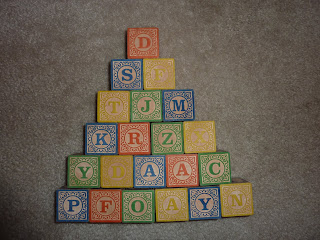You've nailed down your convictions. You are persuaded of them and determined to stand by them. But sometimes, after determining those convictions, it's really hard to not feel that everyone else ought to share them. Especially within homeschool circles, we tend to rob ourselves of our greatest asset: the fact that homeschool is not an institution and does not have to be the same as everyone else's. We find the curriculum that we love, the dream schedule, the clock-work routine, the perfect system of record keeping and organization—and we just know that if everyone else only knew what we knew, their homeschool would be better off.
That's not to say that there aren't pitfalls to warn others about or methods that are destined for failure, but how do we combat our own critical spirit of others? And how do we offer advice without discouraging someone on the journey?
Listen, rather than speak. The more experience we gain, the harder it becomes to just listen. Most people are not seeking for advice; they are seeking encouragement. Listen to find out what they are saying and why they are telling you! Did he just find the perfect solution for a problem he was having? Did a new homeschooler just figure out what you've known for years? Did she just discover the "perfect" curriculum, the same one you gave up on last year? Rather than preparing your counsel, listen for cues that will let you know how to simply encourage.

Ask, rather than tell. Ask questions rather than speak your mind—genuine questions, not sarcastic ones. "What are your thoughts on that?" "How's that working for you?" "Have you had any trouble with ____?" By asking a sincere question, I show that I'm willing to learn something new, I'm able to celebrate what she has found to work with her children, and I nurture a friendship rather than creating an enemy. Nothing builds hostility like poorly timed advice.
Encourage others, rather than extol yourself. Really, it's not about me. I don't want to be passionate about homeschooling or unschooling, classically educating or traditionally educating. I want my passion to be about educating children, giving them the best start to life and, as a Christian, the tools to serve God well.
I love homeschooling, and I am very excited about the style and approach we are taking with it. But I also understand that mine is not the only right way; that smart, godly individuals can come from public school, private school, or homeschool; that successful individuals don't all have to have a college degree or don't have to be homeschooled a certain way to succeed in college. When I'm in a conversation with another homeschooler, my goal should be to find ways of encouraging their success not broadcasting my own success.
So what happens when a homeschooler is in trouble? How do you warn or offer advice without discouraging them?
First, don't prey on their fears. Every homeschooler lives with the weight of their child's educational future. Never insinuate utter failure: "your child will never learn to read"; "your child won't get accepted into college if..." And never pull out the "you know, they say..." arguments. Second, give several options as solutions not just your own method: "we do this, but I know others who really love this." Last, point them to a general source rather than your specific solution. For instance, give them links to websites that provide reviews or blogs that specifically post on that particular topic.
If you must give a warning, do so casually rather than ominously. Remember that the goal is to encourage, not discourage. For instance, be honest about what didn't work for you and how YOU might have contributed to the failure. And be willing to be proven wrong.
Realistically, homeschooling is a long, hard road with lots of readjustments along the way. Let's encourage our fellow pilgrims and be willing to admit our own shortcomings. Afterall, one man's failure could very well be someone else's success.

- For more on combatting criticism, click here.



















